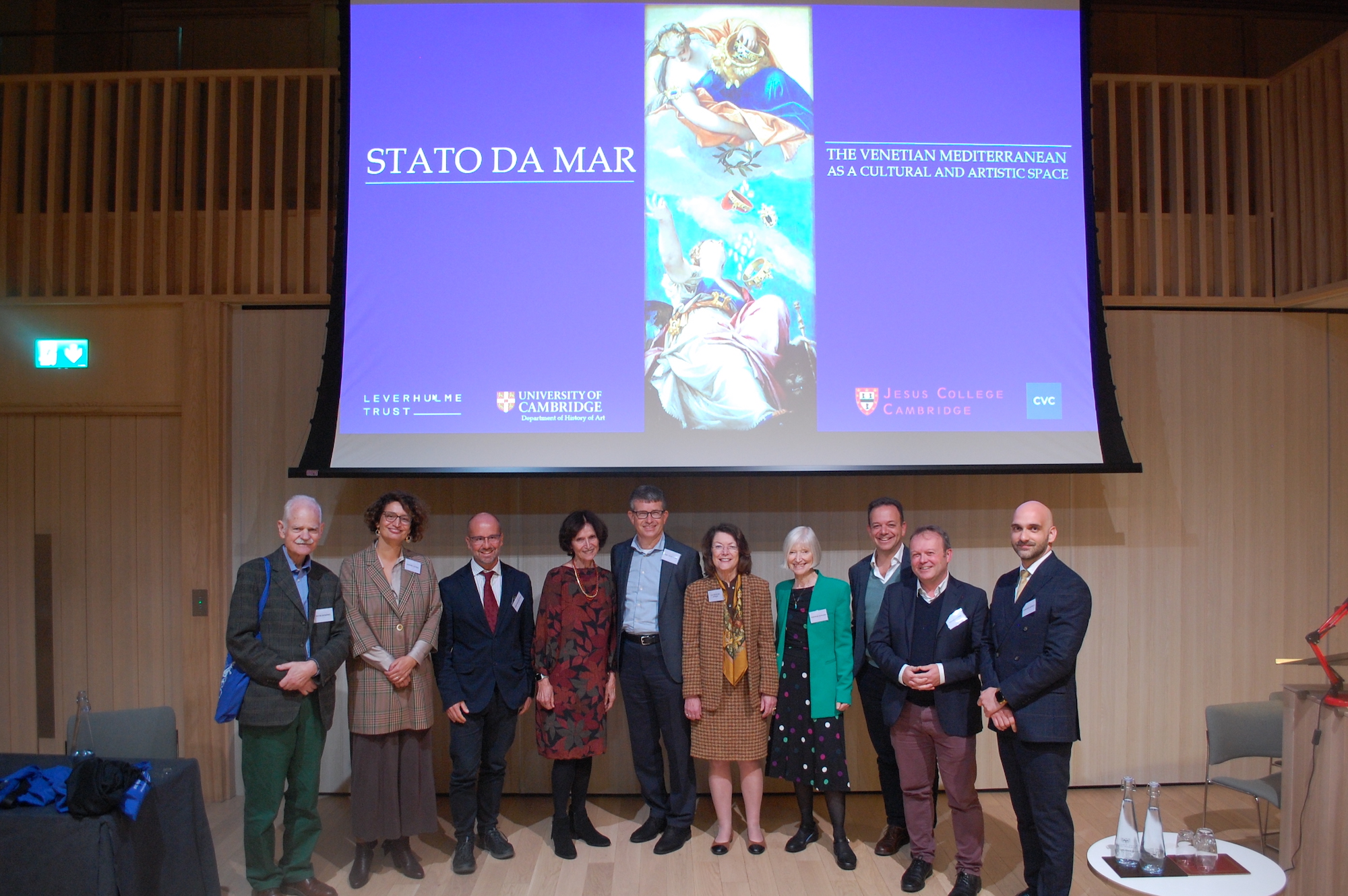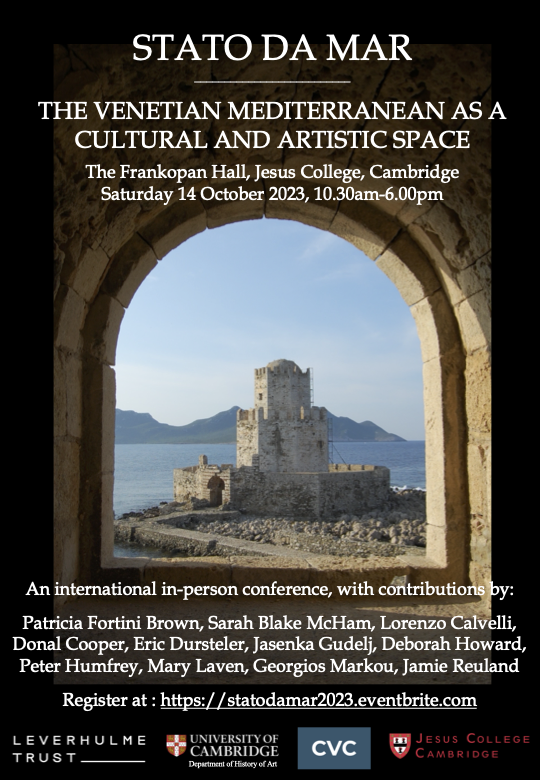Submitted by M.L. R. Grove on Mon, 30/10/2023 - 15:40
The conference took place at Jesus College on October 14th 2023.
Over the past quarter century, the study of the ‘Venetian Mediterranean’ – tracking the broader field of Early Modern Mediterranean Studies – has grown into a thriving interdisciplinary area of research. The older emphasis on the Venetian maritime territories – or Stato da Mar, in contradistinction to the Terraferma – as a trade-driven archipelago (exemplified by Frederic Lane’s Venice: Maritime Republic, 1973), has been extended by scholarship on their rich social and cultural composition. Influential studies around the turn of the Millennium established the importance of the Eastern Mediterranean within the Venetian visual imagination and, conversely, situated the cultural experience of the maritime dominions firmly within the frameworks of hybridity and post-colonial studies. More recent studies have exploited the Venetian archives as a uniquely rich documentary record to reconstruct and explore the historical experience of individual Mediterranean subjects of the Serenissima, emphasizing identity as a fluid and negotiated quality. Twentieth-century national historiographies have given way to an appreciation of the Stato da Mar as a multi-polar cultural space.
If Venetian rule was projected in the built environment through gates, loggias, clock towers, fortifications, and numerous Lions of St Mark, its umbrella also facilitated high levels of mobility and cosmopolitanism that reached beyond the metropole. Growing up in Venetian Candia, El Greco would have been exposed not only to paintings by leading Venetian artists, but also to sculpture in Heraklion cathedral by a Parisian mason. The towns and cities of the Stato da Mar preserved their own worldviews and foundation legends, frequently articulated through the cult of saints and associated with substantial monuments from antiquity.
The present conference brings together leading scholars who have explored diverse aspects of the Stato da Mar in their publications, deploying different approaches and sources. While making no claims for comprehensive coverage, the programme seeks to capture a snapshot of current research (encompassing literature, libraries, antiquarianism, food, and music alongside the visual arts and built environment).
With contributions by:
Patricia Fortini Brown, Sarah Blake McHam, Lorenzo Calvelli, Donal Cooper, Eric Dursteler, Jasenka Gudelj, Deborah Howard, Peter Humfrey, Mary Laven, Georgios Markou, Jamie Reuland


